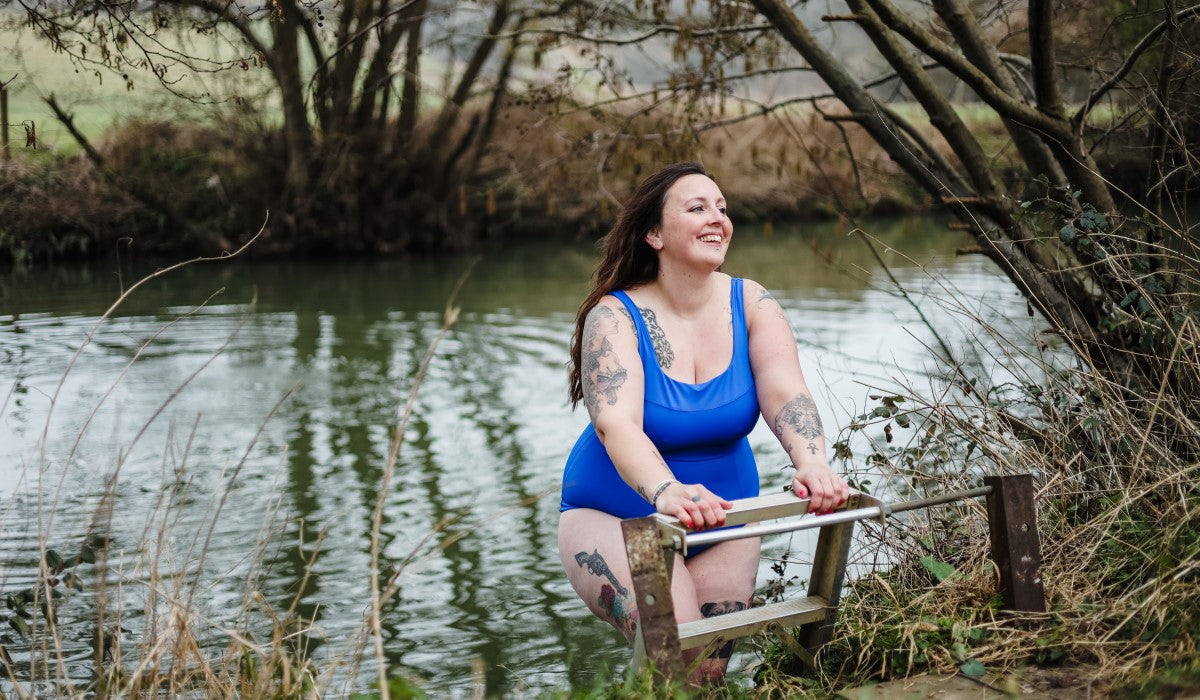Your Bag is Empty
CLOSING DOWN SALE. ALL ITEMS REDUCED AND FINAL SALE.

With the sniff of spring in the air, is now a good time to start wild swimming? We asked our resident outdoor swimming coach.
You might be brand new to swimming in the sea, rivers or lakes, or have swum in previous summers. You might have signed up to an open water swimming event or challenge. Or you might be looking for an outdoor activity for better mental health. Whatever’s got you thinking about taking the plunge, we’re here with top tips to help you start wild swimming this spring.
Spring is an exciting time for new hobbies and new adventures. And, as more people switch on to the benefits of cold water for mind, body and soul, outdoor swimming is on the radar for lots of us.
While lots of us dip in the winter, getting outdoors in spring feels much more inviting. But it does bring its own set of challenges that are worth thinking about – whether you're a beginner or emerging from the winter season.

When you swim outdoors, you really get to know the weather. In the UK, this is extra important because our weather is very variable. March, April and May can be baking hot, cold and blustery, torrential downpours or even snowy – and sometimes all of those things in the same week.
Whereas we expect cold, inclement weather in the winter and dress accordingly, changeable spring weather can catch us out - we can find ourselves without enough warm layers or a hat after our swim.
It’s not just about what we wear. Heavy rain and wind can affect the conditions of our swim too. For example, high winds change how bumpy and lumpy our swim is. If you’re swimming in the sea when there’s no incoming swell and a strong offshore wind, you’ll usually get white horses out at sea but calm water close to shore that’s perfect for swimming. Spin the wind direction so it’s coming onshore, and the white horses will crash onto the beach. Another example is that heavy rains can cause rivers to flood and compromise water quality.
It's easy to forget on a warm spring day that the water’s still very cold. Unlike in the summer and early autumn, rivers, seas and lakes haven’t had time to warm up yet. So, even if it's t-shirt and shorts weather, cold water shock and cold incapacitation are still a risk – and this catches out even the most experienced winter swimmers. Lulled into a false sense of security by the warm sunshine, we stay in for too long and put ourselves at risk of after drop.
On the flip side, the spring sunshine makes warming up afterwards so much easier. So, as long as you’ve not staying in too long, catching the first rays of the year is an absolute joy.

You've heard of spring tides, but what are they and what do they mean for sea swimming?
In the sea, the height of the high water and low water varies throughout the month. Twice a month, the tides reach a maximum level and fall to a minimum level. And the tides with the biggest difference between high and low water are called spring tides. These spring tides always happen just after the full and new moon. This is because the sun, moon and earth are in line, meaning that the lunar and solar tides line up making a bigger total tide. Around the spring and autumn equinoxes (March and September 21st), those spring tides are extra big.
So, what does this mean for sea swimmers? Well, because there’s a bigger difference between high and low water, the water moves further, faster and at great volume between those two points and this can create dangerous currents.
Annoyingly for planning swims (but as an amazing reminder of the power of nature), tides play out differently at different beaches. So, how can you stay safe?

There’s been loads in the news lately about water quality. You can check the water quality where you swim with the Safer Seas alerts or sewage map for rivers. But it’s worth knowing that water quality is most likely to be poor after stormy weather. This is because the CSOs (Combined Sewer Overflows) are allowed to discharge untreated sewage and waste water into the environment when the sewerage system becomes overloaded – because of heavy rainfall, for example.
Heavy rainfall causes other problems, too. It washes chemicals and fertilisers off agricultural land and into waterways. It also increases the volume of water in rivers, making them flow faster and hiding hazards under the surface. In other words, heavy April showers and springtime farming activities aren’t a great combo for river swimmers.
So, how do you keep yourself safe in rivers in spring?

It's a beautiful time of the year for swimming and we can’t wait to get into the water and enjoy longer swims. The sociability and camaraderie of swimming outdoors is one of our favourite elements – yes, there’s safety in numbers, but there’s also joy in swimming together. So, let's all do it safely so that we get the most from our spring dips.